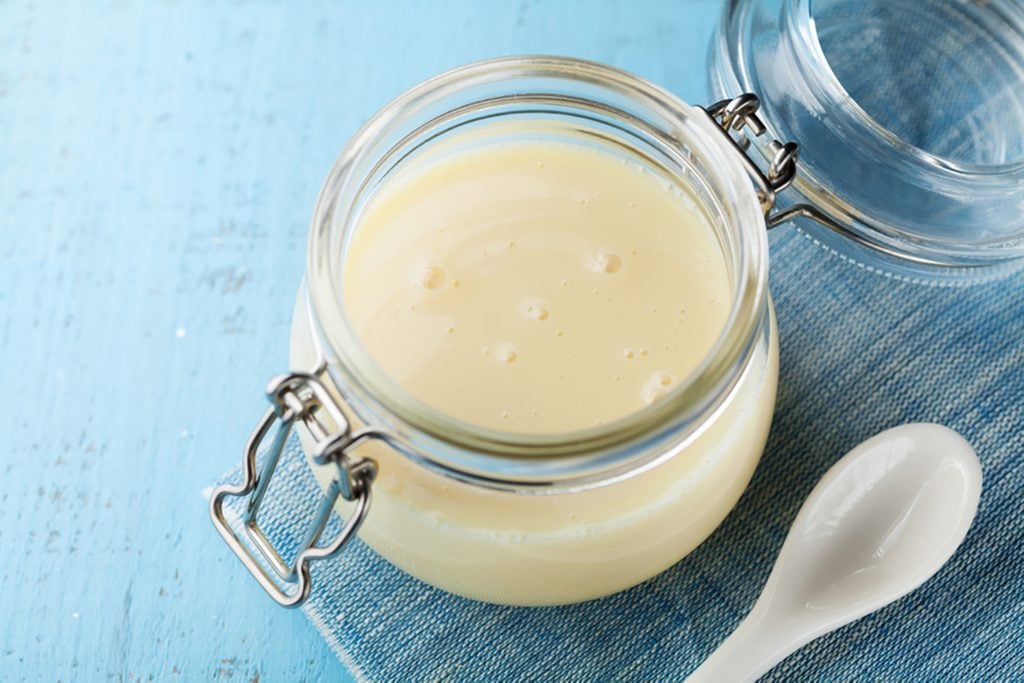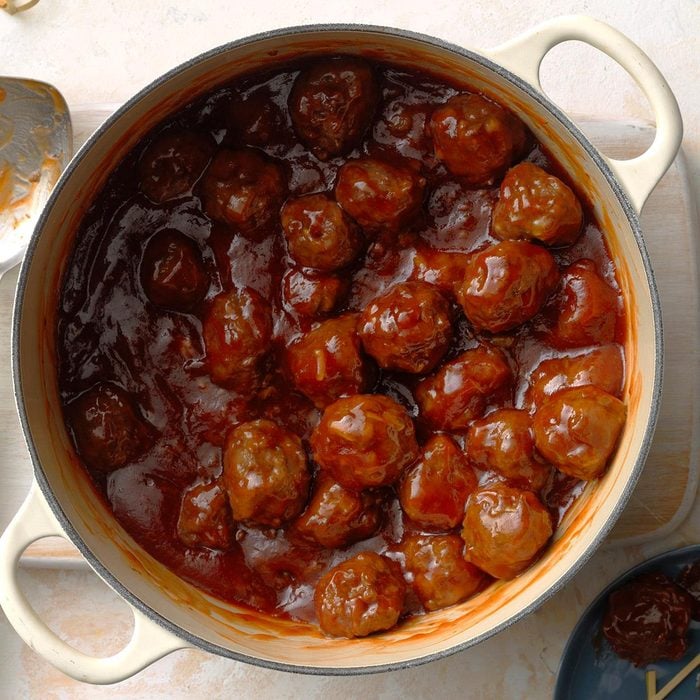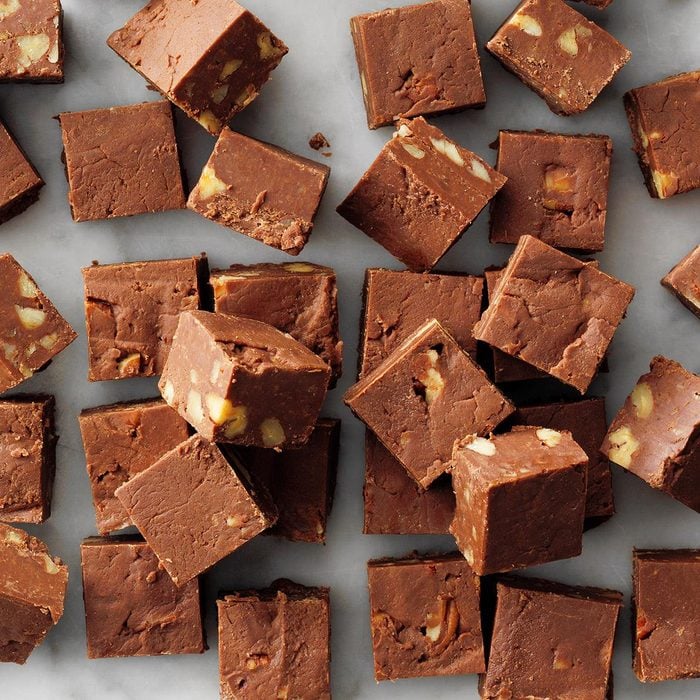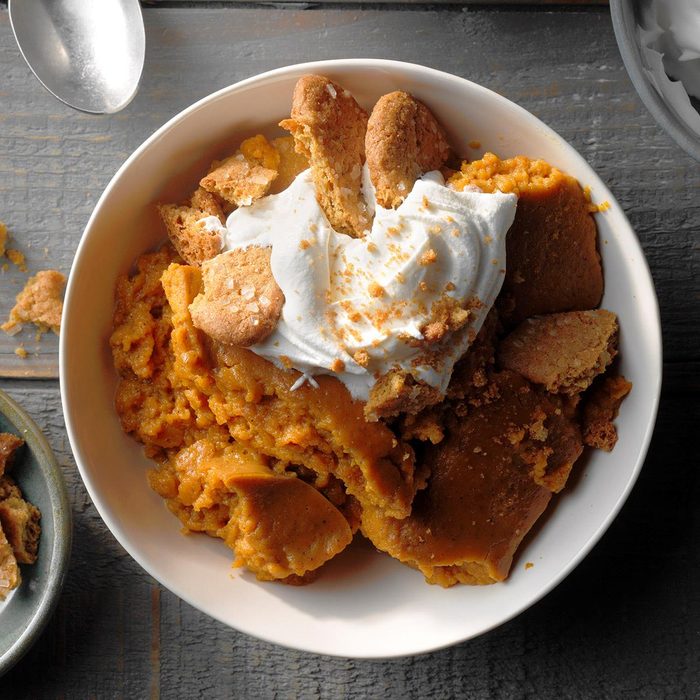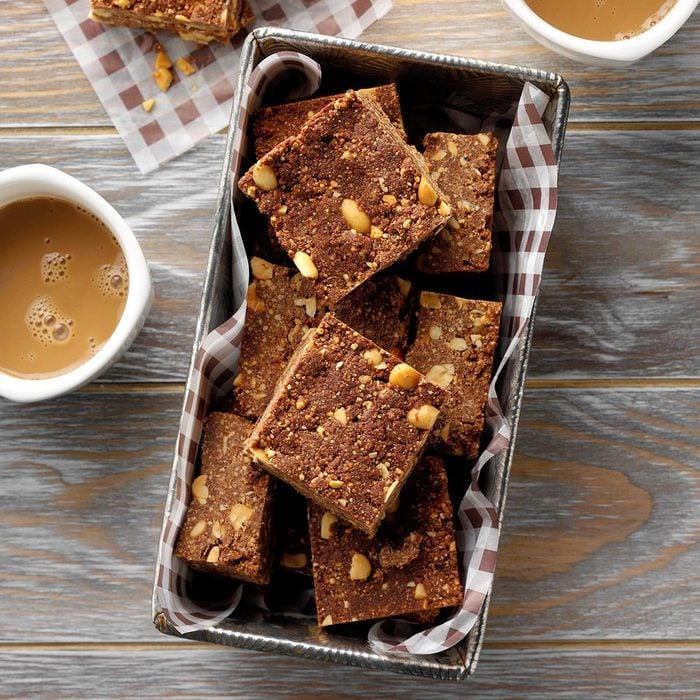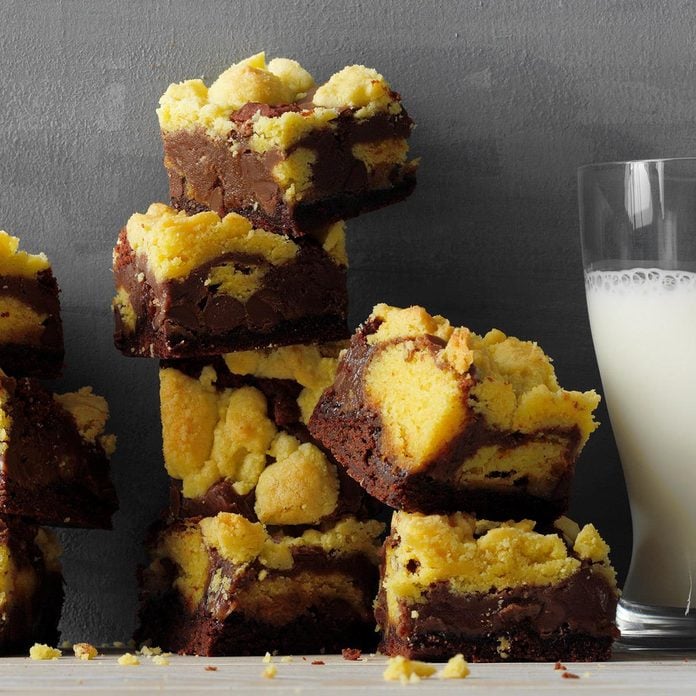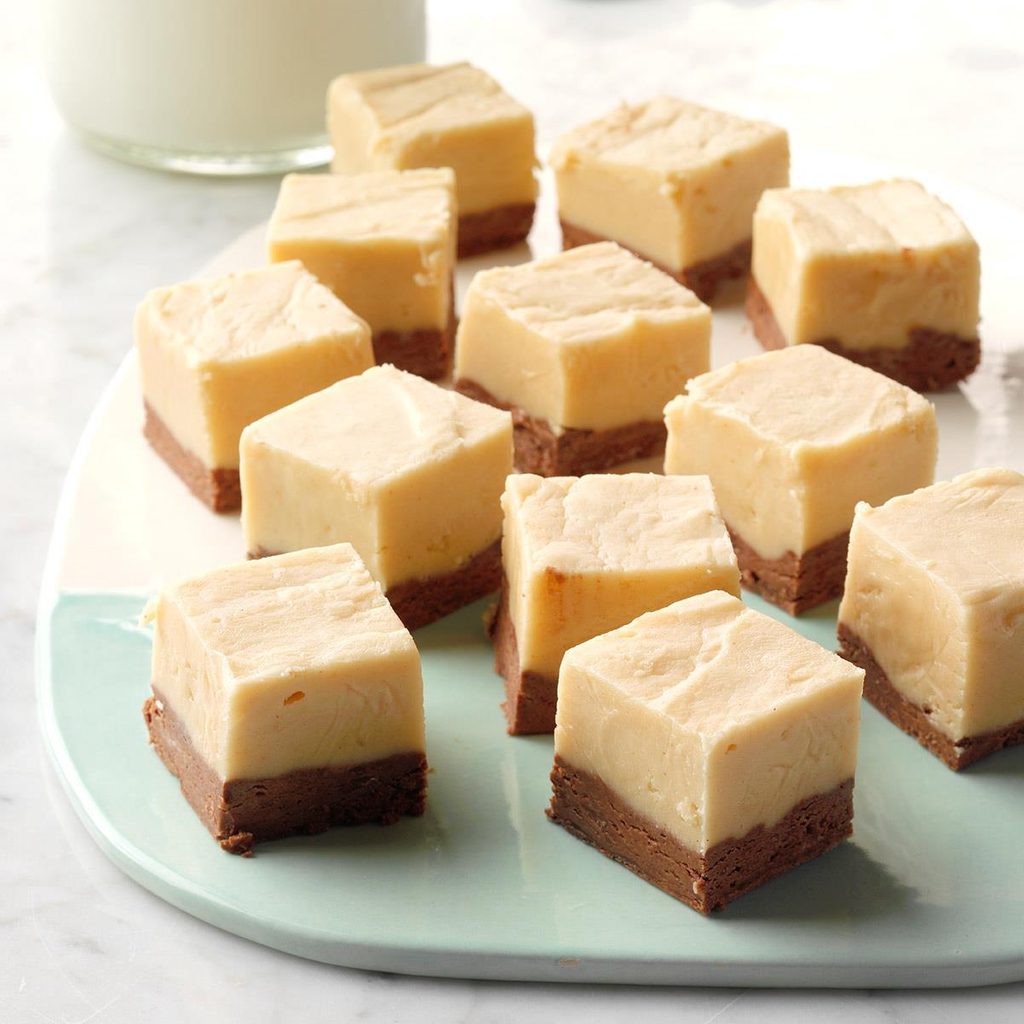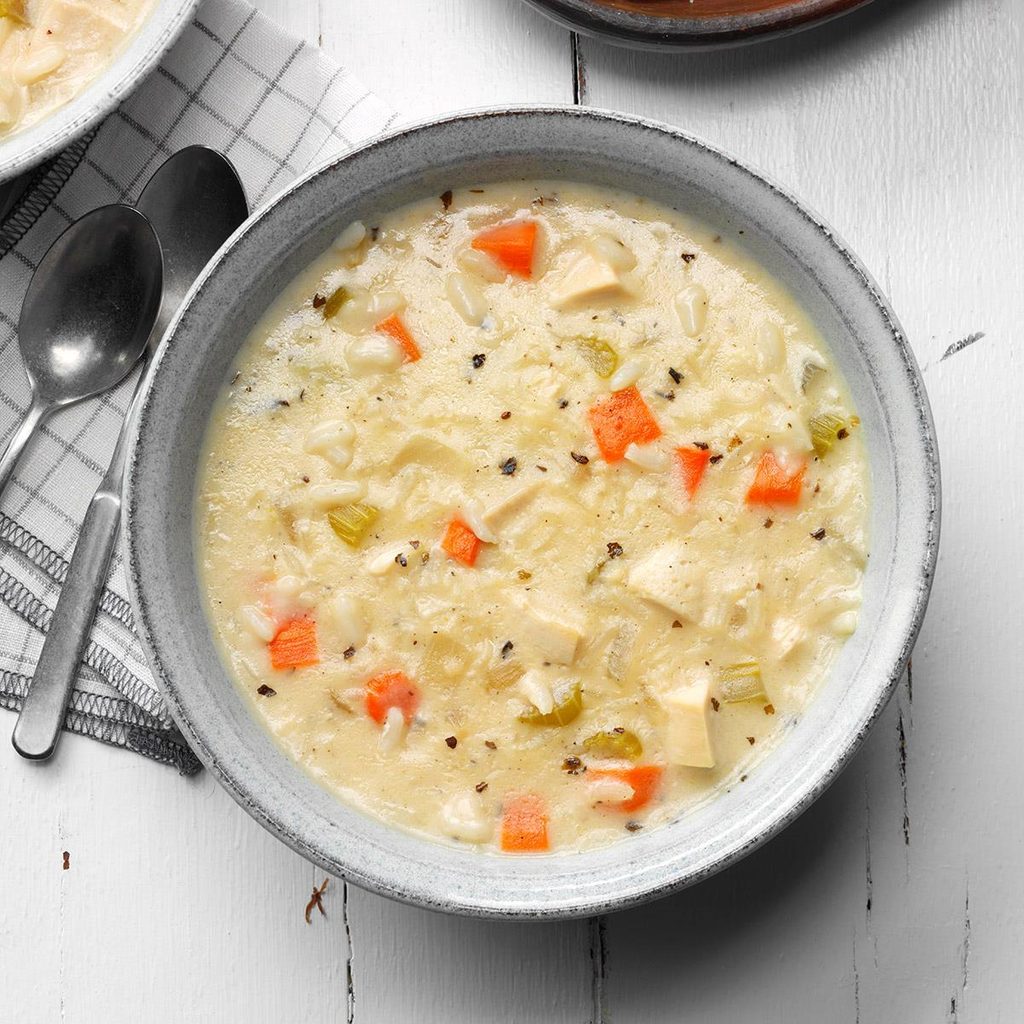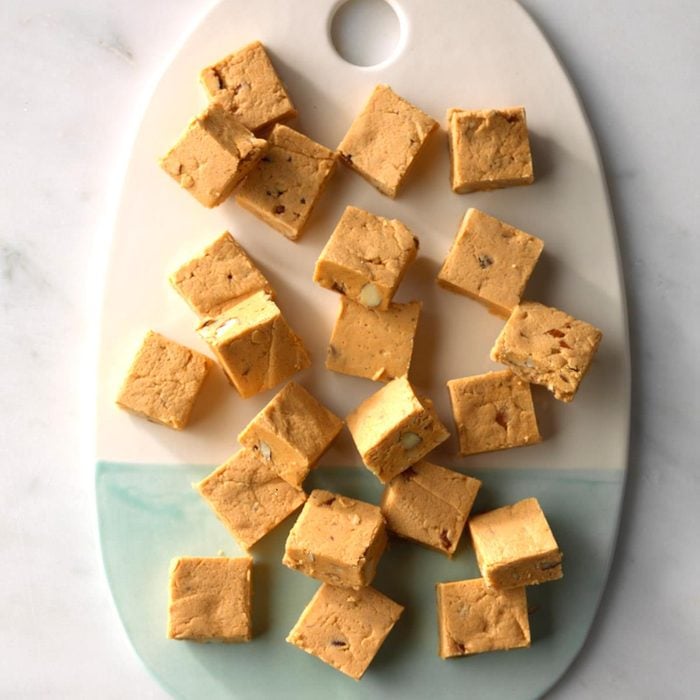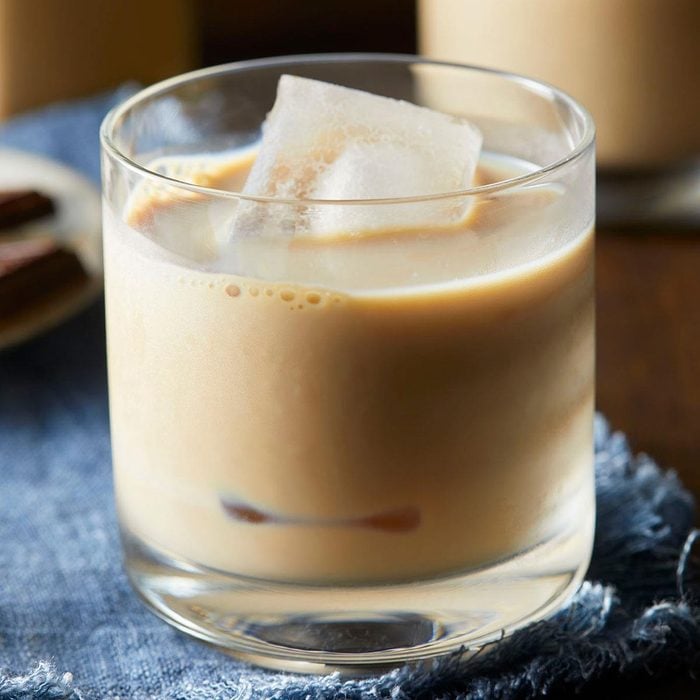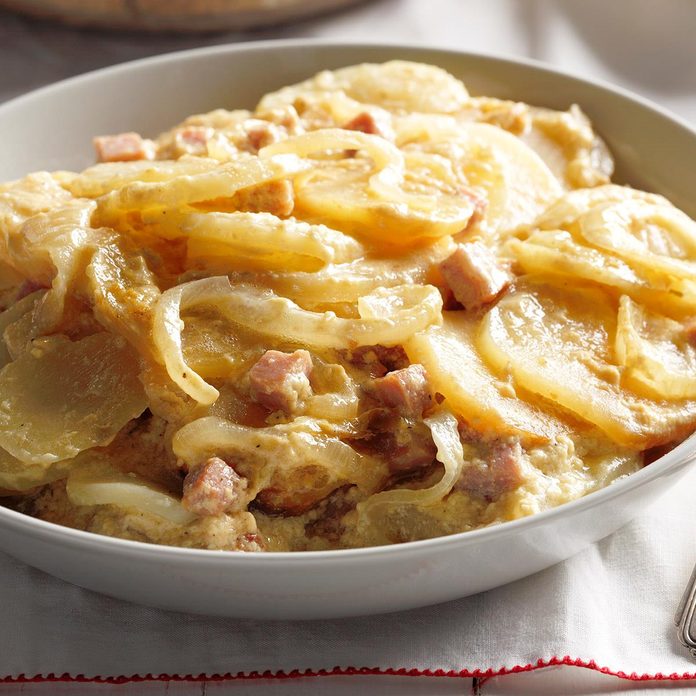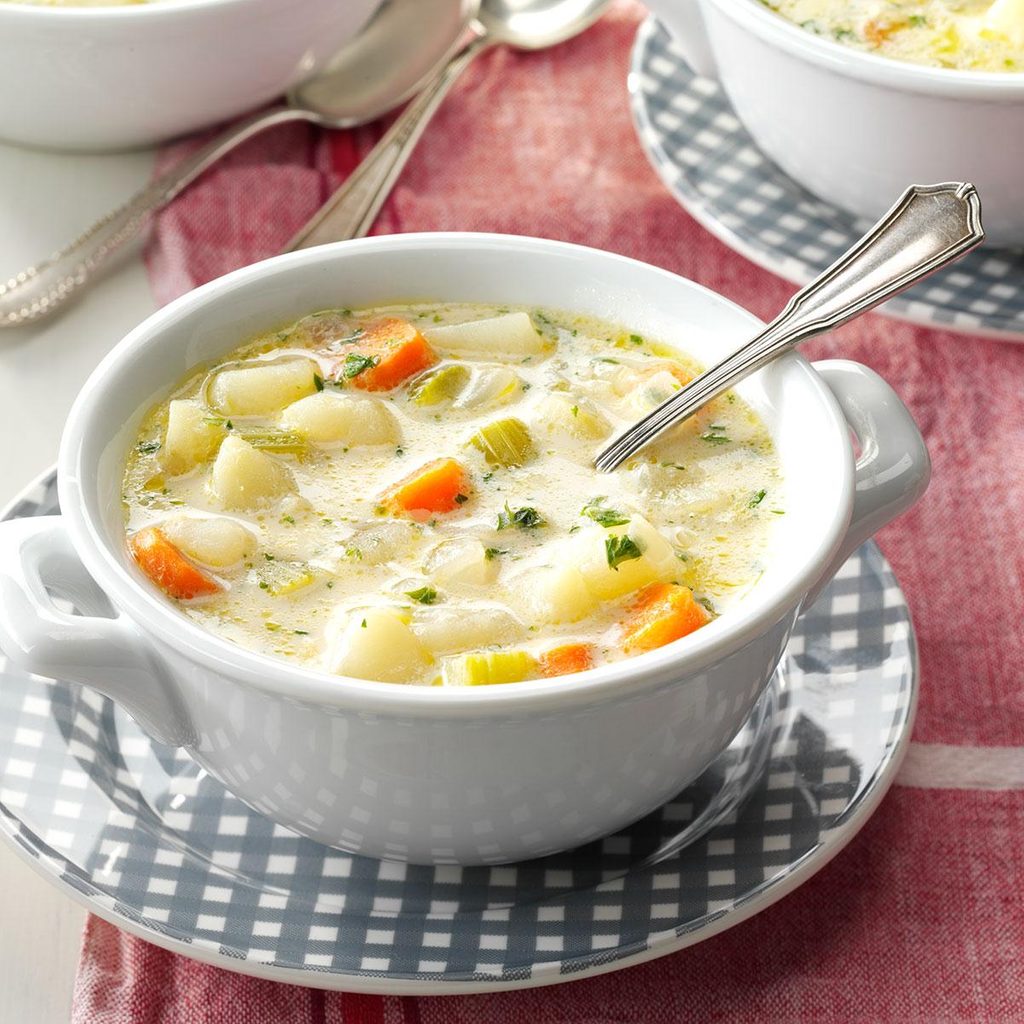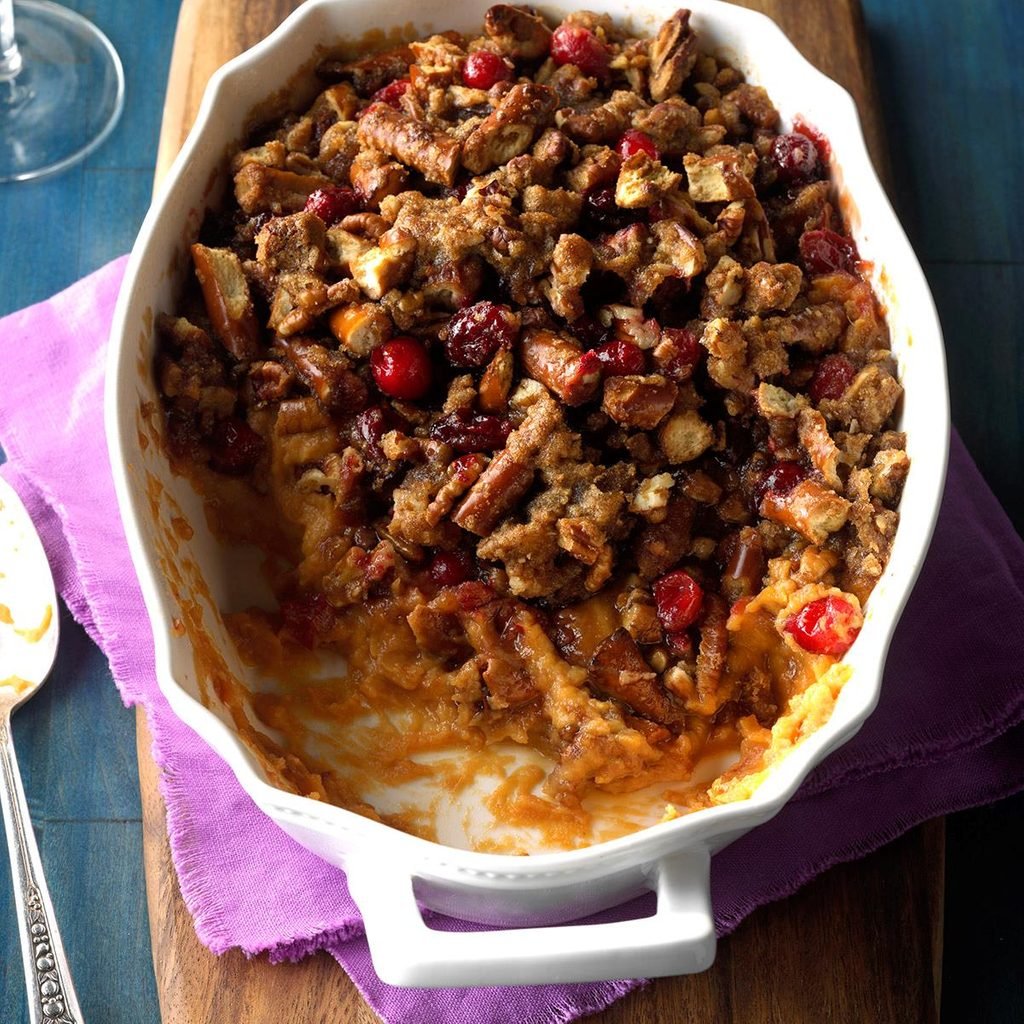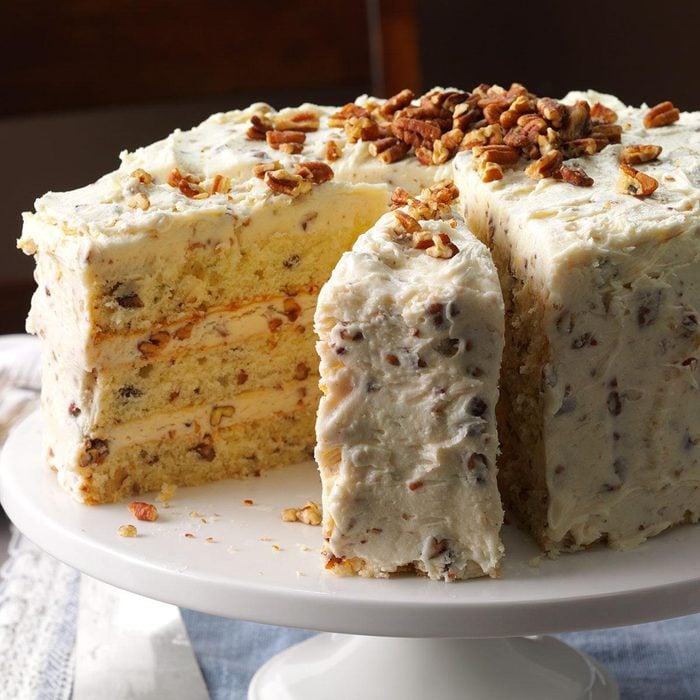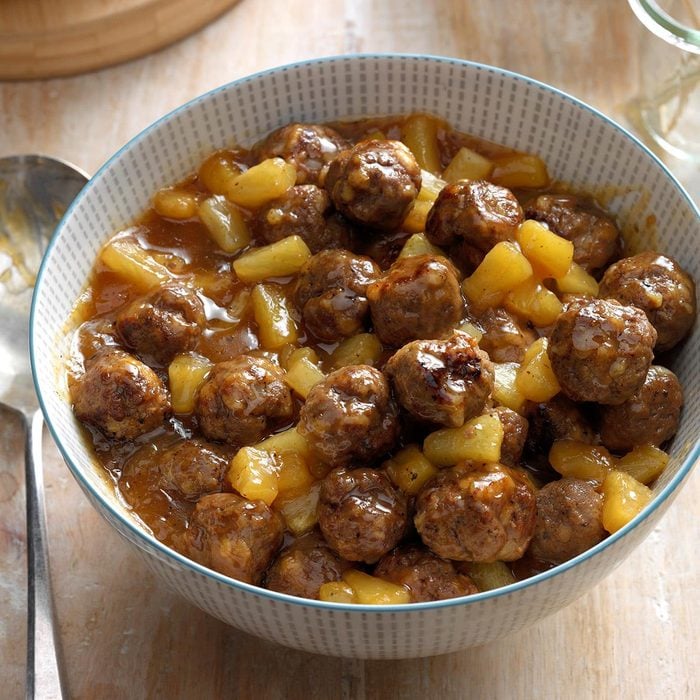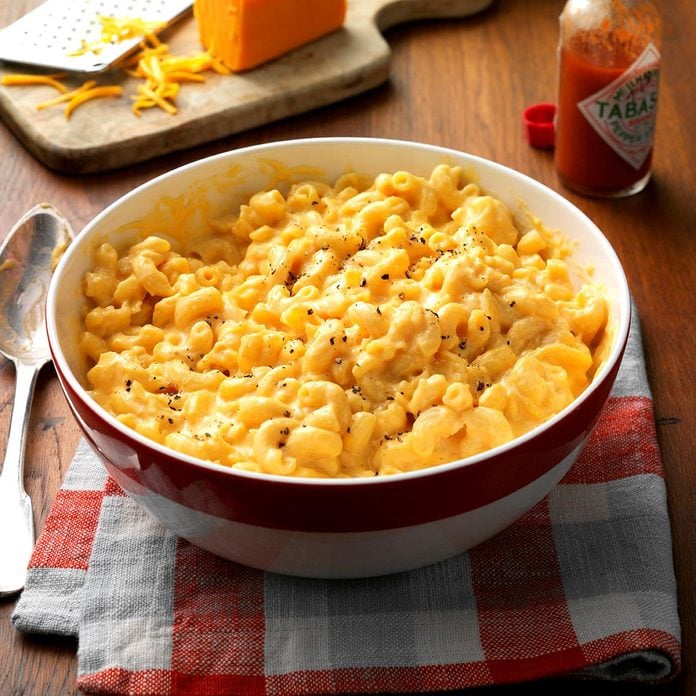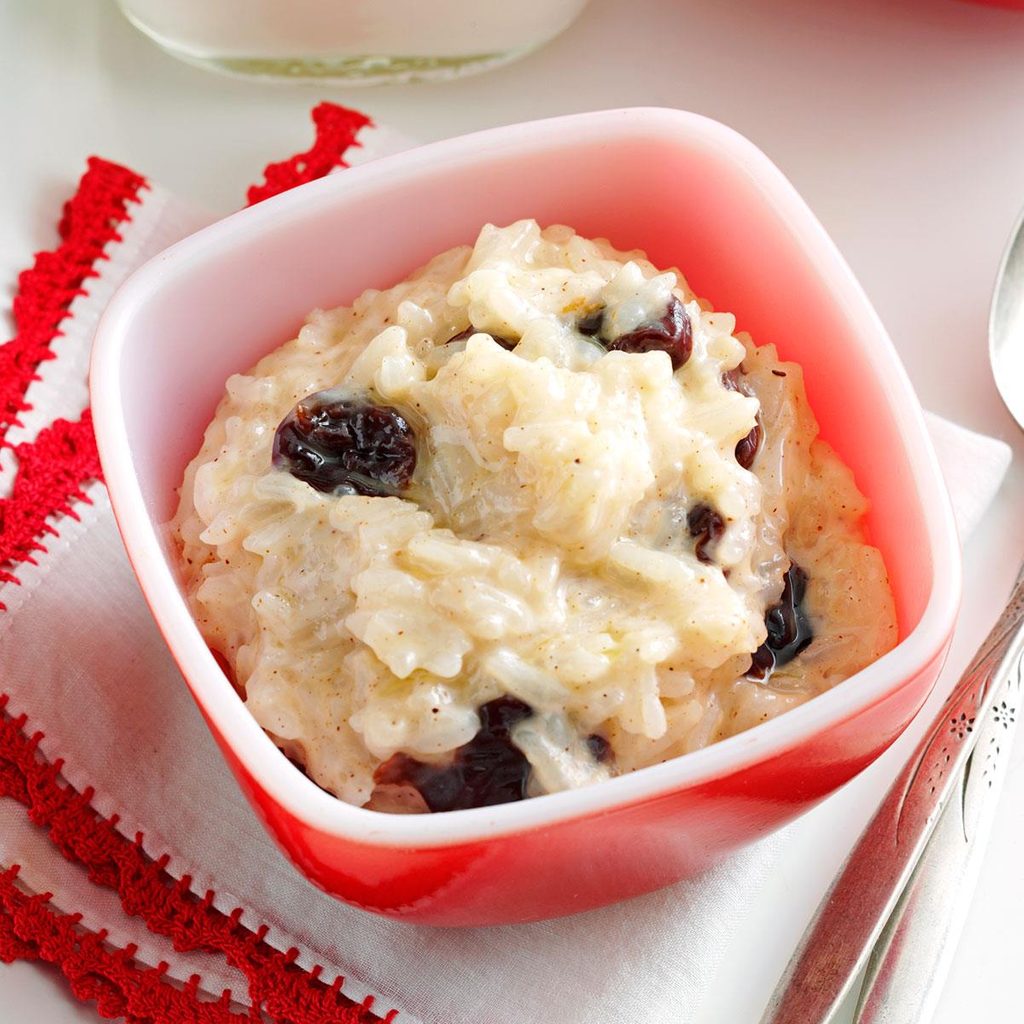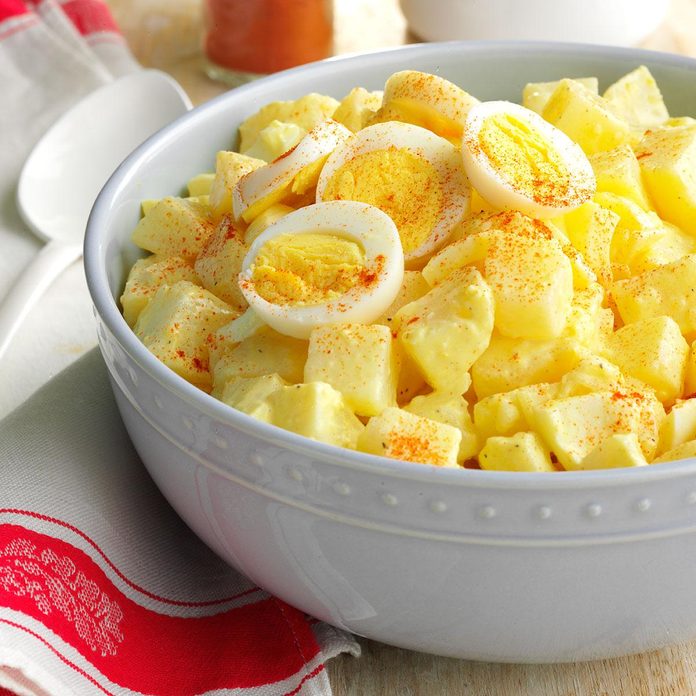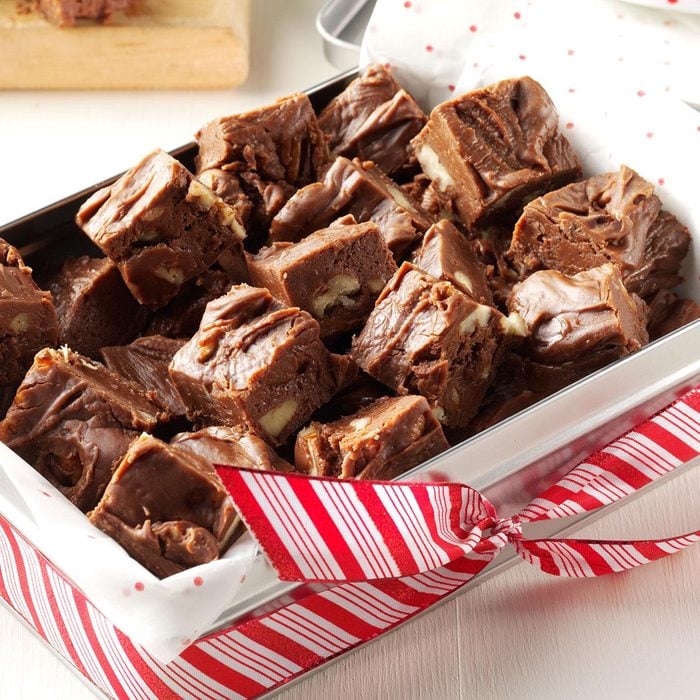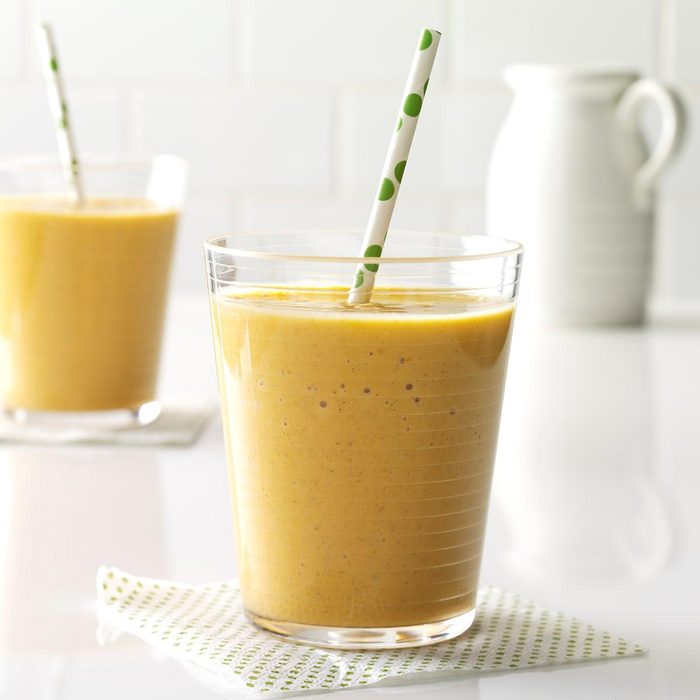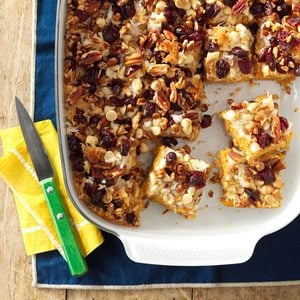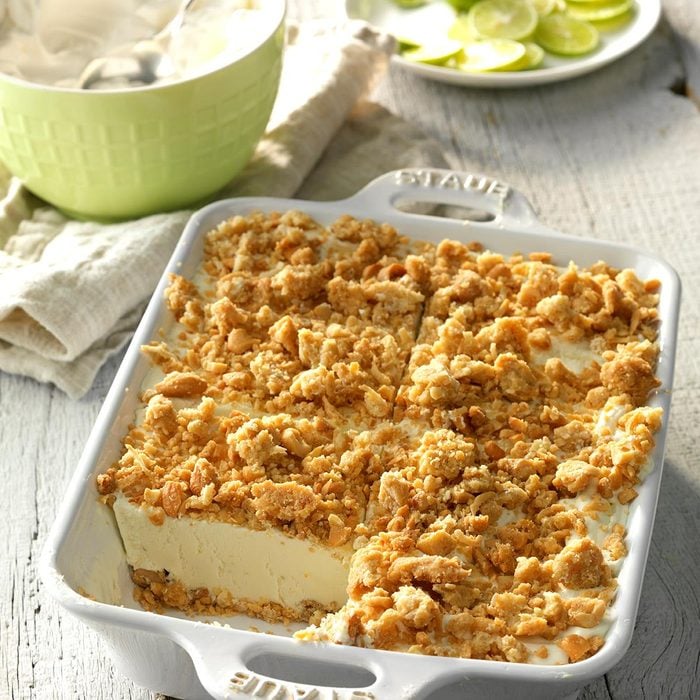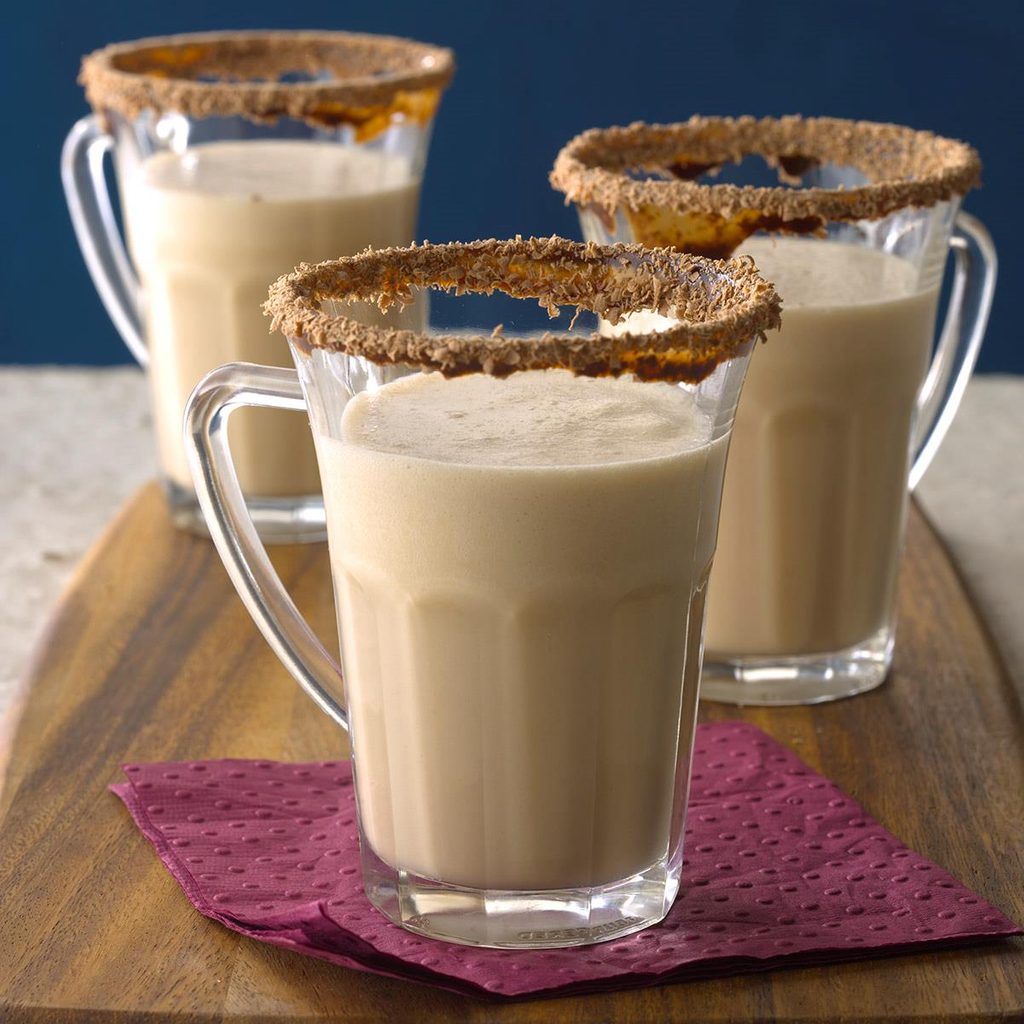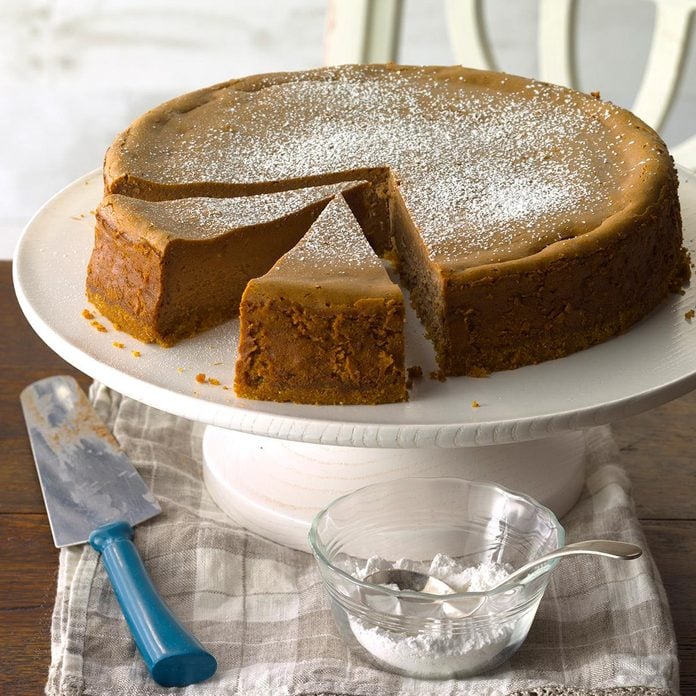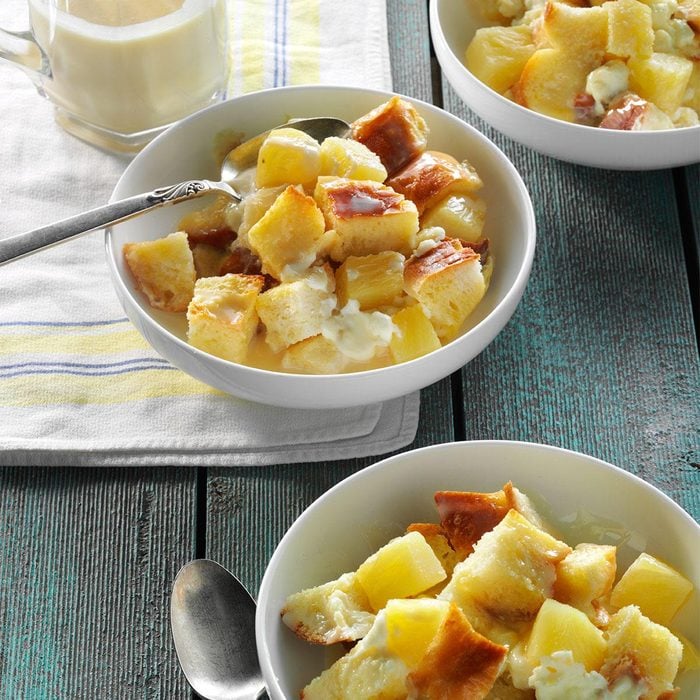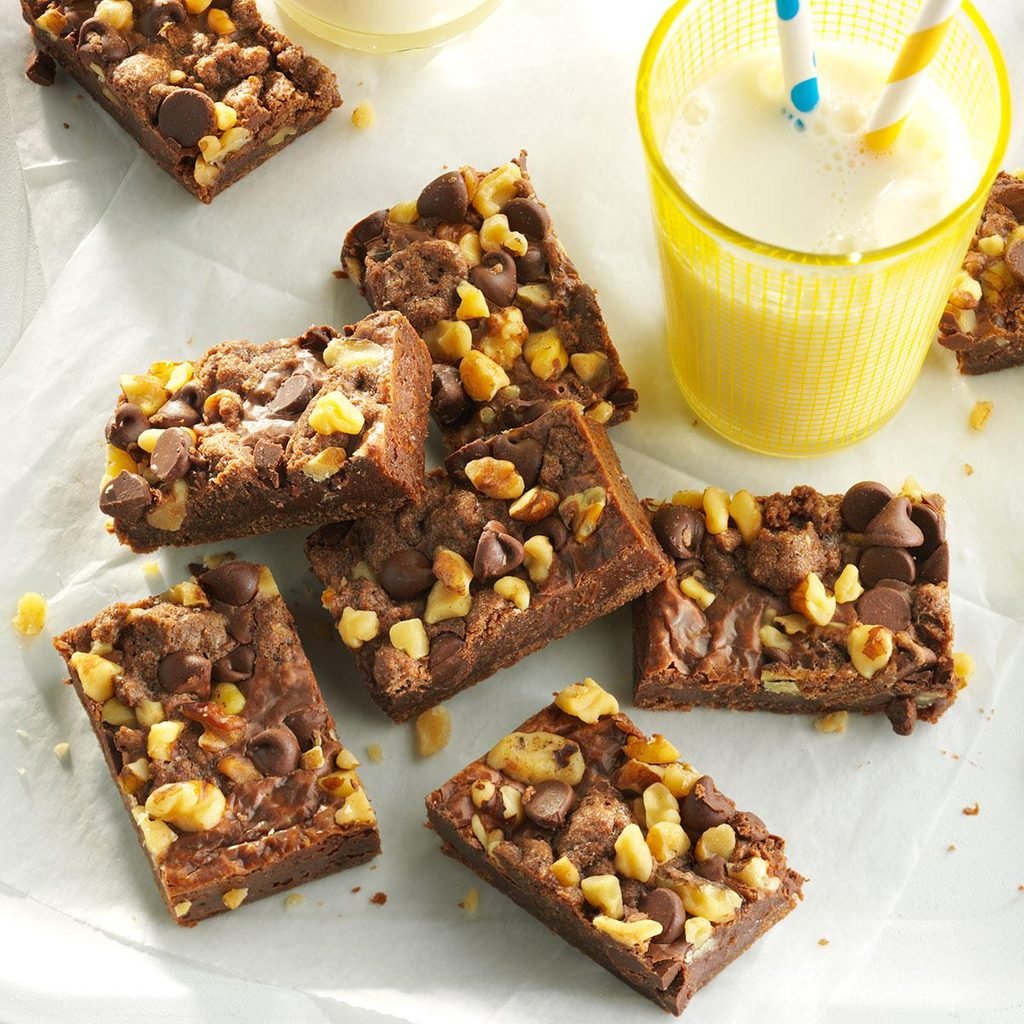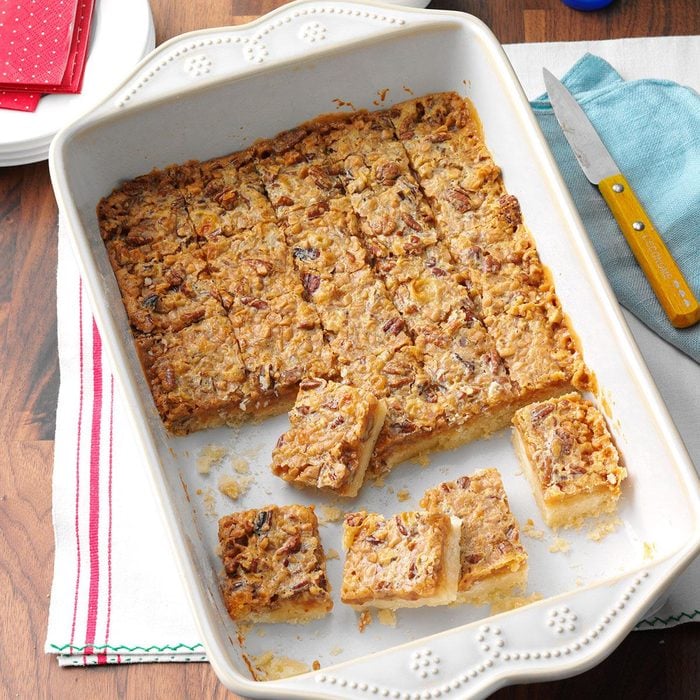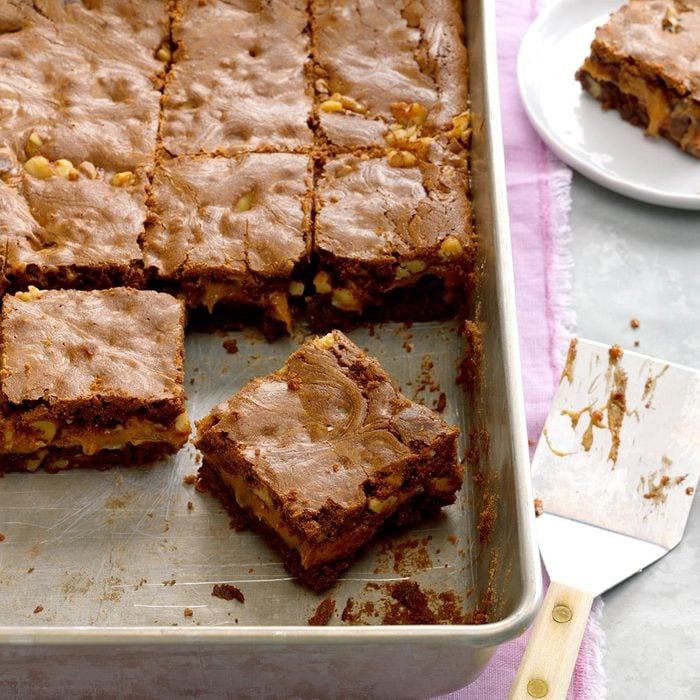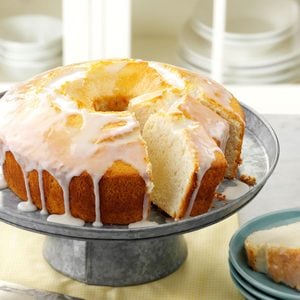 Taste of Home
Taste of Home
This fluffy cake is a real treat drizzled with the sweet-tart lemon glaze. —Rebecca Baird, Salt Lake City, Utah
Go to Recipe
Classic Pumpkin PieNothing says Thanksgiving like a slice of pie. And you can relish every luscious bite of this pumpkin pie recipe since the tender crust is made with canola oil and a mere hint of butter. —Taste of Home Test Kitchen
Don't swap evaporated milk with condensed milk—they're not interchangeable.
Here's what makes them different.
Chicken and Asparagus BakeGreet guests with a taste of springtime when this chicken asparagus bake is on the menu. It cooks in just half an hour. People savor the rich cheesy sauce, and it freezes well, too. —Ramona Ruskell, Columbia, Missouri
Holiday Eggnog SnickerdoodlesEggnog flavor is infused into the cookie and the glaze with this yummy recipe, perfect for the Christmas season.—Bonnie Massimino, Brookeville, Maryland
Beef Enchiladas VerdesThese beef enchiladas verdes are easy to make ahead and refrigerate until you’re ready to bake. After quickly cooking the tortillas in hot oil, I layer them between paper napkins to soak up excess oil. —Joan Hallford, North Richland Hills, Texas
Raspberry Lemon CakeWant a change from chocolate cake? Try this elegant lemon raspberry cake packed with refreshing citrus flavor, from the cake to the homemade lemon curd and creamy frosting. It won a blue ribbon at the Alaska State Fair and it's definitely a winner with me. —Shirley Warren, Thiensville, Wisconsin
Party MeatballsThese meatballs in a sweet, tangy sauce can be made a day in advance and reheated. We usually serve them at birthday parties. - Irma Schnuelle, Manitowoc, Wisconsin.
Holiday Sweet Potato CheesecakeFamily and friends can't seem to get enough of this deliciously different cheesecake that combines my two favorite desserts—sweet potato pie and cheesecake. I think the dessert tastes best if made 24 to 48 hours prior to serving. —Melanie Bauder, Manlius, New York
Southern Mac and CheeseNo down-home meal is complete without Southern mac and cheese. Three types of cheese and a squirt of mustard make this comforting dish sing! —Katie Sloan, Charlotte, North Carolina
Gob CakeThis gob cake recipe has been passed down in our family for generations. We always eat it at our gatherings. —Kristina Hershey, Columbia, Pennsylvania
Stroganoff SoupMy husband and I share a love for all kinds of soup and came up with this delicious recipe together. It really does taste like beef Stroganoff. With a crusty roll, it's a satisfying meal in itself. —Karen Shiveley, Springfield, Minnesota
Triple Chocolate FudgeThis recipe makes more than enough to share with family and friends. It's the ultimate yummy gift! —Linette Shepherd, Williamston, Michigan
Pumpkin Spice CustardHere's a traditional slow-cooker pumpkin spice custard with some espresso powder for a latte effect. —Shelly Bevington, Hermiston, Oregon
Caramel TassiesThese buttery, smooth caramel tassies make a nice addition to a dessert tray. These are ones that my family looks forward to every year. —Jane Bricker, Scottdale, Pennsylvania
Golden Clam ChowderThis is comfort food at its best! Yes, you can have a warm bowl of homemade clam chowder for dinner tonight or any night. The soup is seasoned expertly and thyme adds a great dimension of flavor. —Amanda Bowyer, Caldwell, Idaho
Old-Fashioned Oat BreadWhen this old-fashioned oat bread is baking, it reminds me of childhood and the warm, inviting aromas that greeted me after school. The light sweet flavor, crispy crust and hearty texture of this bread made for a special treat when Mom baked it for us. —Gloria Murtha, West Mifflin, Pennsylvania
Mexican Chicken BakeI've had this Mexican chicken bake recipe for 30 years. Since my kids, grandkids and guests of all ages request it often and it takes only about 30 minutes to make, I have it at least once every other month! —Linda Humphreys, Buchanan, Michigan
No-Bake Peanut BrowniesYou can enlist the kids to help make these chocolaty peanut butter brownies. I like
the fact that I can enjoy them but keep my kitchen cool, especially in summer. —Connie Ward, Mount Pleasant, IA
Best Banana Ice CreamMy son-in-law says this is the best banana ice cream he’s ever had. It’s always requested at family gatherings. —Donna Robbins, Skiatook, Oklahoma
Best Seafood ChowderMy husband is an avid fisherman. When a family get-together was planned and we had to bring something, we created this recipe using fish from our freezer. The chowder got rave reviews from the relatives! —Heather Saunders, Belchertown, Massachusetts
Sweet Potato Souffle with PecansMy grandmother makes this sweet potato souffle recipe every Thanksgiving. It's just so full of love and memories (and pecans!) that it needs to be shared. —Natalie Gray, Moreland, Georgia
Broccoli Rice CasseroleThis hearty broccoli rice casserole is my usual choice to make for a potluck. With the green of the broccoli and the rich cheese sauce, it's pretty to serve, and it makes a tasty side dish for almost any kind of meat. —Margaret Mayes, La Mesa, California
Cake Mix BrowniesThese cake mix brownies are a mashup of two of my favorite desserts. A woman I worked with gave me a recipe for chocolate caramel brownies, and I had a recipe for yellow cake mix bars. I wondered what they would taste like together, so I tried it. I've been making them ever since! —Staci Mergenthal, Verdi, Minnesota
Creamy Caramel FlanA small slice of this impressively rich, creamy, caramel flan dessert goes a long way. What a delightful finish for a special meal or holiday celebration. —Pat Forete, Miami, Florida
Slow-Cooked Creamy RiceThis wonderful side dish goes well with any meat stew. I use whatever fresh herbs I have on hand along with the chopped parsley to add even more flavor. —Laura Crane, Leetonia, Ohio
Chocolate Caramel CandyThis dazzling treat tastes like a homemade Snickers bar and has flavor beyond compare. When I entered it in a recipe contest at our harvest festival, it won five ribbons, including grand prize and the judges' special award. —Jane Meek, Pahrump, Nevada
Comforting Tuna PattiesMy grandmother and mother made these tuna patties on Fridays during Lent. I'm not the biggest fan of tuna, but it's perfect in this dish. These patties are even good cold the next day, if there are any leftovers. —Ann Marie Eberhart, Gig Harbor, Washington
New Orleans BeignetsThese sweet French doughnuts, inspired by the ones found in Cafe du Monde in New Orleans, are square instead of round and have no hole in the middle. They're a traditional part of breakfast in New Orleans. —Beth Dawson, Jackson, Louisiana
Ribbon Fantasy FudgeI developed this recipe especially for my husband, who likes anything that has chocolate and peanut butter together!
Bacon Cheeseburger SoupThis bacon cheeseburger soup brings two of my absolute favorite foods together in one! The tomato, fresh lettuce and crisp bacon toppers make this soup taste as if it's burger time. —Geoff Bales, Hemet, California
Classic Swedish MeatballsI'm a "Svenska flicka" (Swedish girl) from northwest Iowa, where many Swedes settled at the turn of the century. This recipe was given to me by a Swedish friend. It's obviously a 20th century version of a 19th century favorite, since back then they didn't have bouillon cubes or evaporated milk! I think you'll agree that these modern-day "Kottbullar" are very tasty. —Emily Gould, Hawarden, Iowa
Fluffy WafflesA friend shared this fluffy waffle recipe with me a few years ago. The cinnamon cream syrup is a nice change from maple syrup, and it keeps quite well in the fridge. Our two children also like it on toast. —Amy Gilles, Ellsworth, Wisconsin
Creamy Chicken Rice SoupI came up with this creamy chicken rice soup recipe while making some adjustments to a favorite stovetop chicken casserole. We like this soup for lunch with a crisp roll and fresh fruit. —Janice Mitchell, Aurora, Colorado
Chocolate Cream PieOur teenage son, John, has done lots of 4-H baking. This old-fashioned chocolate cream pie recipe with a flaky crust was his favorite thing to make. —Mary Anderson, De Valls Bluff, Arkansas
Cheesy Chile CasseroleA short list of ingredients packs full flavor in this easy-to-assemble casserole. Serve it as the star of your next southwestern meal. —Phyllis Bidwell, Las Vegas, Nevada
Broccoli-Mushroom Bubble BakeI got bored with the same old breakfast casseroles I'd see at our monthly moms' meetings, so I decided to create something new. Judging by the reactions of the other moms, I think I have a winner. —Shannon Koene, Blacksburg, Virginia
Garlicky Cheddar Cheese BisqueI came up with a cheddar cheese soup a while ago and decided to give it a boost with a variety of root vegetables. Crushed pita chips and fresh parsley make fun garnishes. —Patricia Harmon, Baden, Pennsylvania
Butterscotch Pumpkin FudgeEach one of these creamy, heartwarming treats is like a bite-sized pumpkin pie. —Kathleen Henne, Camp Hill, Pennsylvania
Chunky Potato Leek SoupMy family and I crave a steaming bowl of potato leek soup on a cold winter evening, but we don't want the butter and fat content of regular soup recipes. So I created this lighter version. I have shared it with many folks, and everyone who has tried it loves it for the robust, satisfying flavor. —Christine Frye, Odessa, Missouri
Homemade Irish CreamAdd some creamy goodness to your cup of joe with a splash or two of this homemade Irish cream. —Marcia Severson, Hallock, Minnesota
Saucy Scalloped PotatoesFor old-fashioned flavor, try these scalloped potatoes. They cook up tender, creamy and comforting and chopped ham adds a hearty touch. —Elaine Kane, Keizer, Oregon
Cranberry Orange PancakesAs special as the holidays, these fluffy pancakes are drop-dead gorgeous, ready in just minutes and brimming with sweet, tart and tangy flavor. Seconds, anyone? —Nancy Zimmerman, Cape May Court House, New Jersey
Farmer's CasseroleBetween family and friends, we have nearly 375 visitors a year! This casserole is handy—you can put it together the night before, let the flavors blend, then bake it in the morning. —Nancy Schmidt, Center, Colorado
No-Fuss Potato SoupFor a busy-day supper, my family loves to have big steaming, delicious bowls of this soup, along with fresh bread from our bread machine. —Dotty Egge, Pelican Rapids, Minnesota
Raspberry RibbonsI make these attractive, buttery cookies to serve at our remote guest lodge, and all the cooks in the kitchen are addicted to them! —Patsy Wolfenden, Golden, British Columbia
Ravioli with Snap Peas & MushroomsTopped with the toasty texture and flavor of hazelnuts, this pasta makes an easy, earthy weeknight dinner. I serve it with an herb and lettuce salad and white wine. —Charlene Chambers, Ormond Beach, Florida
Pretzel-Topped Sweet PotatoesEveryone I've shared this recipe with says it's the tastiest way to serve sweet potatoes. I like to make it for special dinners and even for brunch as a colorful go-with dish. The mingled sweet, tart and salty flavors are an unusual treat. —Sue Mallory, Lancaster, Pennsylvania
Shrimp ChowderI simmer my rich and creamy shrimp soup in the slow cooker. Because the chowder is ready in less than four hours, it can be prepared in the afternoon and served to dinner guests that night. —Will Zunio, Gretna, Louisiana
Short a can? You can always use a
substitute for evaporated milk.
Butter Pecan Layer CakePecans and butter give this cake the same irresistible flavor as the popular butter pecan ice cream flavor. —Becky Miller, Tallahassee, Florida
Polynesian MeatballsWith pretty bits of pineapple, these meatballs are sure to attract attention—and the sweet-tart sauce brings people back for seconds. —Carol Wakley, North East, Pennsylvania
Butternut Squash BakeIf I ask our two girls (ages 7 and 14) what to fix for a special meal, this dish is always requested. I discovered this slightly sweet and crunchy-topped casserole at a church dinner about 10 years ago, and now I take it to potluck dinners and come home with an empty dish!
-Julie Jahn, Decatur, Indiana
Makeover Slow-Cooked Mac 'n' CheeseThis recipe is a clear example of comfort food at its finest; it's rich, hearty and extra cheesy. And because it's made in the slow cooker, it's also extremely easy. —Shelby Molina, Whitewater, Wisconsin
Cherry & Spice Rice PuddingI live in Traverse City, the Cherry Capital of the World. What better way to celebrate our wonderful orchards than by using plump, tart dried cherries in my favorite desserts? This slow-cooked rice pudding recipe always turns out wonderful. —Deb Perry, Traverse City, Michigan
Italian Sausage & Sun-Dried Tomato PastaFlavor-packed sausage and sun-dried tomatoes are sure to liven up any simple pasta dish. I have a feeling that once you've tried it, it'll become a family favorite!—Dawn Singleton, Eighty Four, Pennsylvania
Homemade Potato SaladThis homemade potato salad recipe doesn't have many ingredients, so it isn't as colorful as many that you find nowadays. But Mama made it the way her mother did, and that's the way I still make it today. Try it and see if it isn't one of the best-tasting potato salads you have ever eaten! —Sandra Anderson, New York, New York
Three-Chocolate FudgeI make this fudge at Christmastime to give to friends and neighbors. That tradition started years ago when I made more candy than my husband, three sons and I could eat, so we shared it. It's a tasty tradition I'm glad to continue. —Betty Grantham, Hanceville, Alabama
Cream of Wild Rice SoupTender cubes of chicken, fresh vegetables and wild rice make this soup hearty enough for a meal. You can't beat the down-home comfort of a warm bowlful. I like to serve it with whole wheat rolls. —J. Beatrice Hintz, Neenah, Wisconsin
Overnight Pumpkin French Toast CasseroleRecipes that don't tie me to the kitchen—that’s what I’m all about. I make this luscious dish the night before breakfast or brunch with guests. —Patricia Harmon, Baden, Pennsylvania
Coconut CloudsCoconut lovers will have extra reason to celebrate when they taste these cakelike drop cookies. The generous frosting and coconut topping make them a hit at holiday cookie swaps. —Donna Scofield, Yakima, Washington
Pumpkin Pie SmoothiesMy pie-flavored smoothie is loaded with fruit. The spices make it all come together. —Karen Sikora, Dayton, Nevada
Gingersnap Sweet Potato Praline PieThis luscious mix of sweet potatoes, spices and nuts is like serving pecan pie and sweet potato pie together. Bake it and watch everyone devour it. —Emily Hobbs, Ozark, Missouri
Chocolate-Caramel Rum CoffeeThis decadent drink can stand alone as a final course or as a complement to dessert. Our family loves it for sipping in front of the fireplace. —Joyce Conway, Westerville, Ohio
